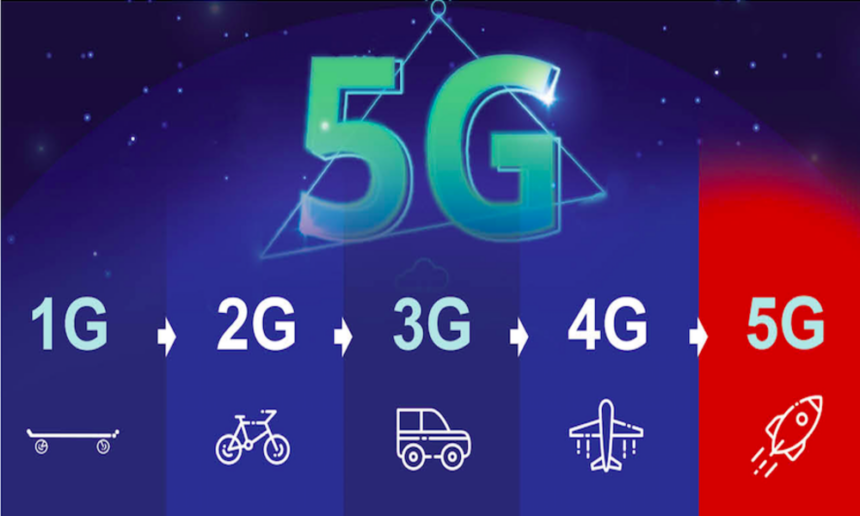Even though we constantly use our smartphones, we usually do not take note of that this device has revolutionized and changed the lives of Mongolians. Smartphones have already become an inseparable part of our existence, since nowadays no one could imagine their life without a smartphone.
Together with the steady progress in technology designed to transmit digital data, one of the driving forces of this revolution is the fierce competition in the telecommunication industry. Mobicom Corporation, the first Mongolian mobile phone carrier, began providing its services in 1996, and subsequently, carriers such as Skytel, G-Mobile, and Unitel were established. These operators compete and provide services to customers in the Mongolian telecommunications industry.
The next-generation 5G is approaching now. Therefore, we need answers to the following questions: when will Mongolia implement the next-generation technology, are we ready to seize new and incredible opportunities, and what are the ways to utilize this generation more efficiently and sagaciously than 4G?
Generations of Digital Communication
Rapid changes in digital communications keep taking place and revolutionize people’s lives without mercy. These leaps of changes are named by their generation, 1G, 2G, 3G, and 4G. The generations of wireless network technologies differ significantly in terms of their data transmission speed, technology, frequency, and capacity. 1G is an analog telecommunication system that only transmits audio signals, but 2G replaced 1G with a digital telecommunication system which enabled both audio and text-based message transmission. Furthermore, 3G enabled video transmission, whereas 4G allowed internet access. In short, each generation brought new features along.
The 5G technology has been implemented in various countries and is about to be introduced in Mongolia, opening up tremendous opportunities, ones we have never dared to imagine. Any device can be linked through the internet (Internet of Things), machines can communicate with, and understand another machine, and autonomously take steps. A new era is approaching when artificial intelligence can replace humans, robots can perform surgery, and self-driving cars can take over the road.
With a higher speed, lower latency and stable connection, the 5th generation network is superior to previous ones. The frequency of 4G reaches below 2.4 GHz (Hertz is one cycle per second for the unit of frequency), whereas 5G reaches from 3.5 to 24 GHz. For instance, to transmit the speed change of a car driving close to your car takes 15 to 25 seconds through 4G, but it only takes 1 millisecond through 5G as if you are experiencing at the same time. However, the waves of high frequency 5G, 24GHz, cannot travel further than a few hundred meters, thus, it requires placing an enormous number of 5G base stations. The first large scale deployment of the 5G network was carried out in South Korea in April 2019, and the US, China, and Japan are vigorously entering this market.
Opportunity and Mongolia
For a landlocked country like Mongolia, the new generation technology provides vast opportunities that allow us to carry businesses into the global market from the comfort of our homes. For consumers, the 5G network brings at least 30 times faster mobile data speed, and therefore an overall greater customer experience. Moreover, a large amount of data is going to be collected, transmitted, stored, and processed as every single device will be linked through the internet.
Entire manufacturing and service industries will be automated when a variety of devices are connected to the internet. According to DBS Group Research, there are 11 billion devices linked to the internet globally, and the number is expected to reach 125 billion due to 5G by 2030. This automation can improve productivity and increase the profit margin by 9%.
To deploy 5G technology 10 times more base stations are required, which equally demands 10 times more investment than 4G. In Mongolia, there are 80,000 business entities registered with the government and 60,000 of them are classified as SMEs. SMEs employ 43% of the total workforce in Mongolia and are only responsible for 2.3 % of total export. Hence, there is a high chance only large entities would reap the benefits and SMEs would be left behind.
On the other hand, Mongolians have just begun to learn how to protect themselves from misinformation and disinformation. Before jumping into a big pool of data, it is necessary to determine how to protect any information concerning privacy and national security, and, how to enforce the laws and regulations.
Investment and Time
Each of the Mongolian four mobile phone operators has been building their own infrastructures, thus, the price is not decreasing for customers. Since 2016, the Unitel Group invested 120 billion Tugriks to deploy 4G technology, and it takes time to recoup the cost. The same is true for the Mobicom Corporation. In Mongolia, it’s the right time to put our heads together and discuss how to provide faster, relatively cheaper 5G network infrastructure for customers. If we proceed in the same manner, a massive inefficient investment would be made, costs would keep rising, and technological transformation would be delayed in Mongolia. Meanwhile we need to identify the obstacles in the way of building a joint infrastructure and utilizing collectively. The technologies of all previous generations strode into Mongolia later than in the rest of the world, will it happen again this time?
2019.10.10
Trans. by Riya.T and Ariunzaya.M












